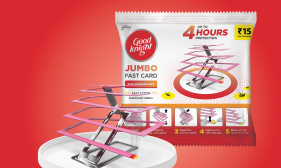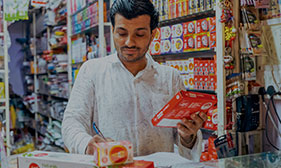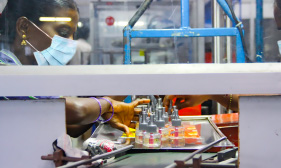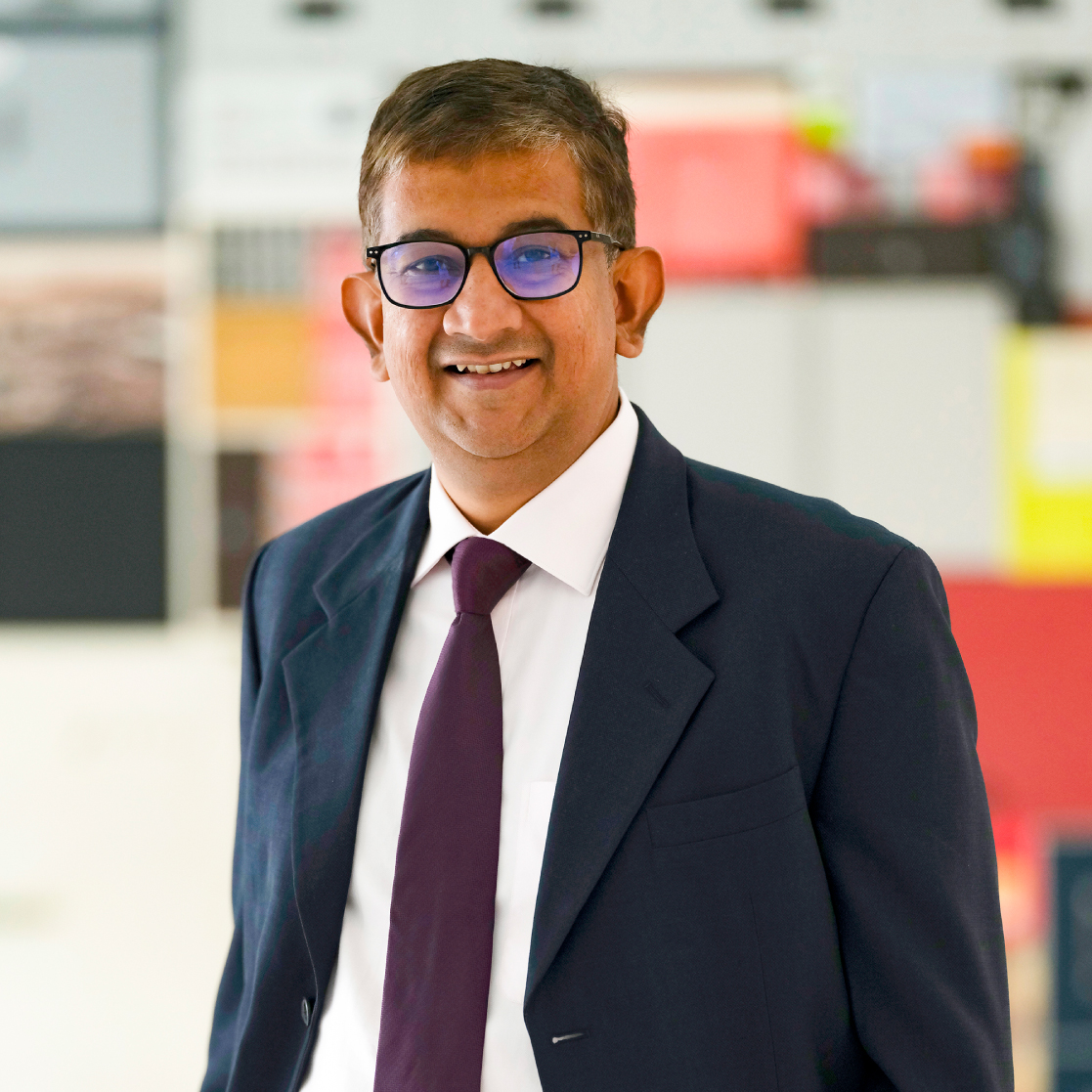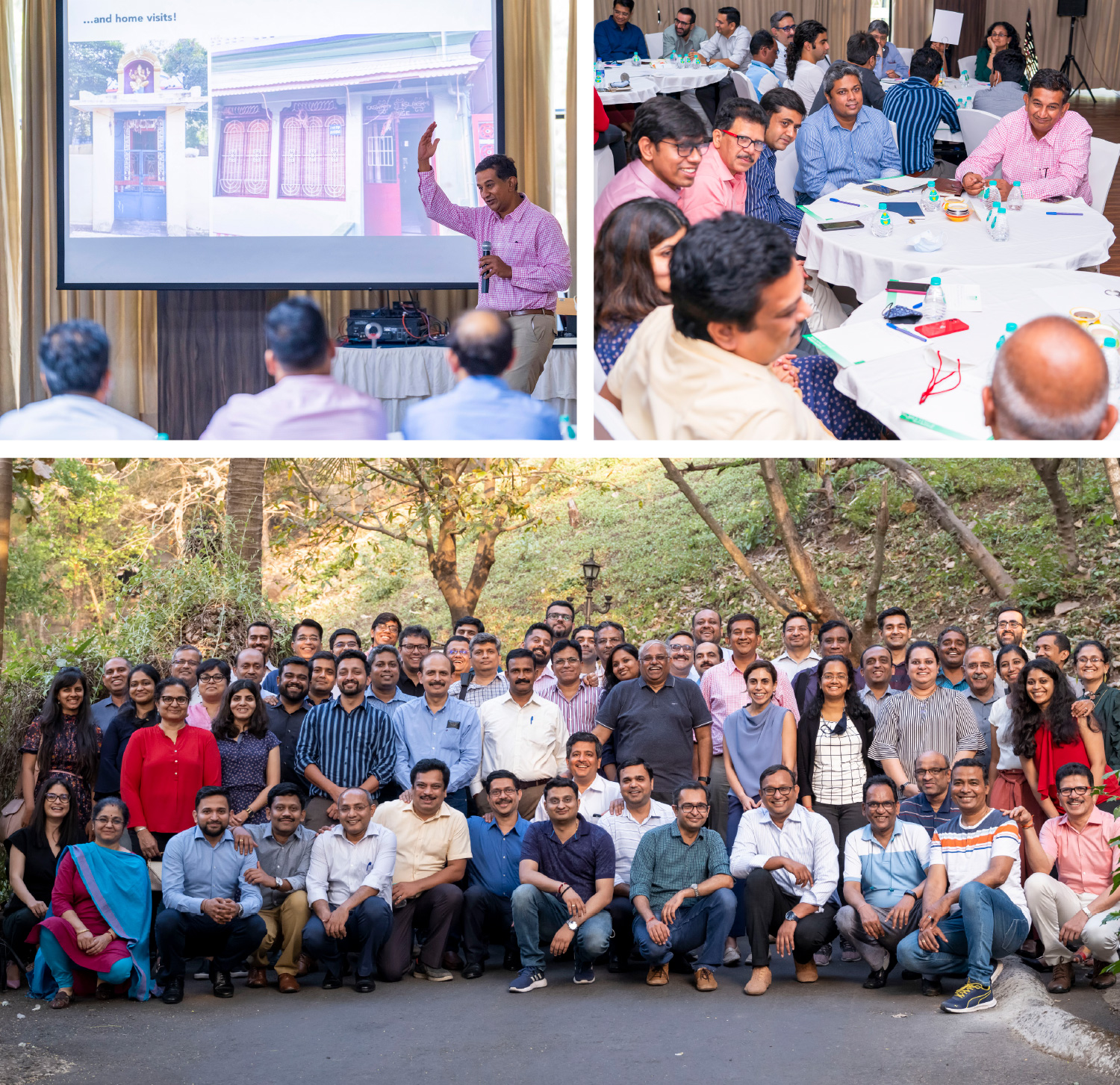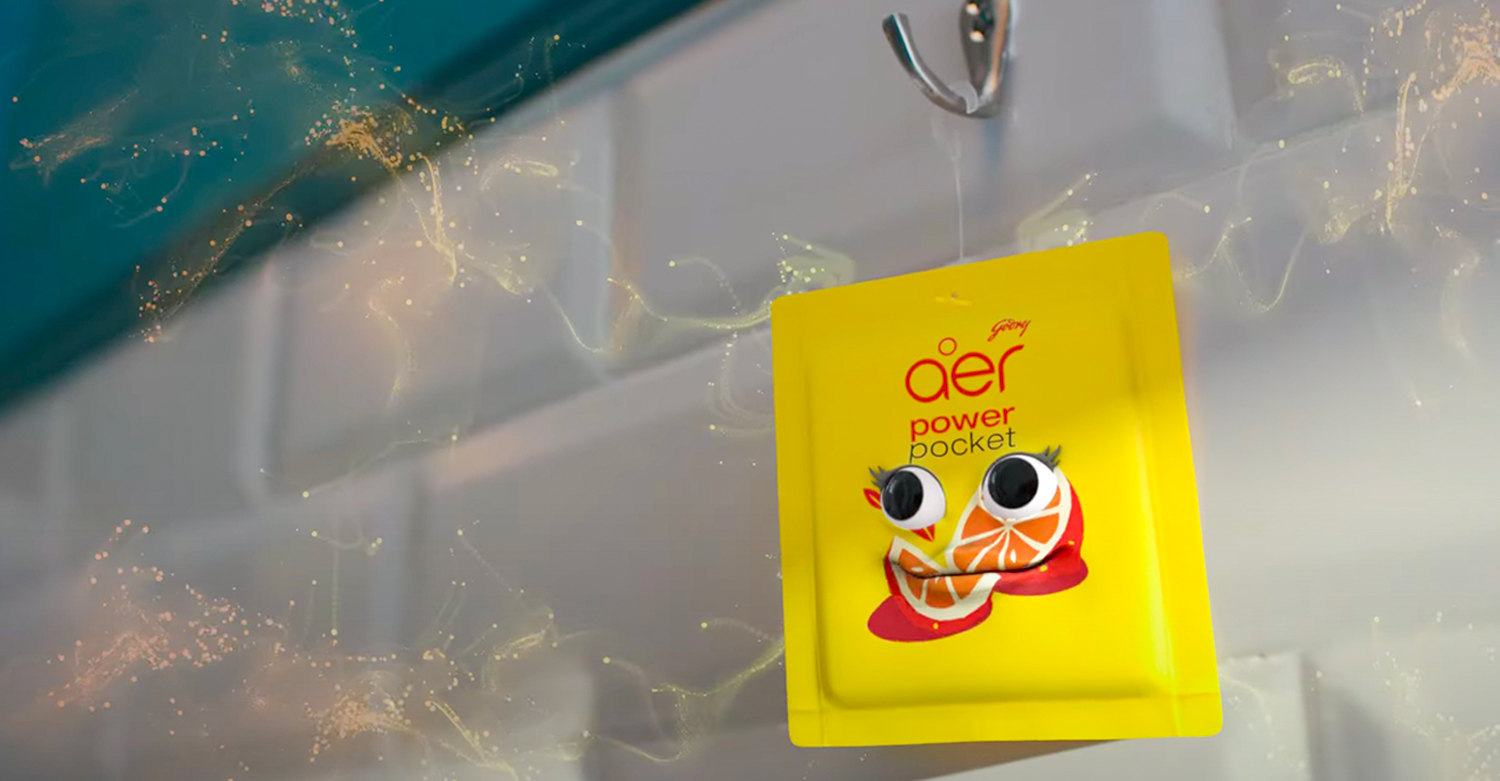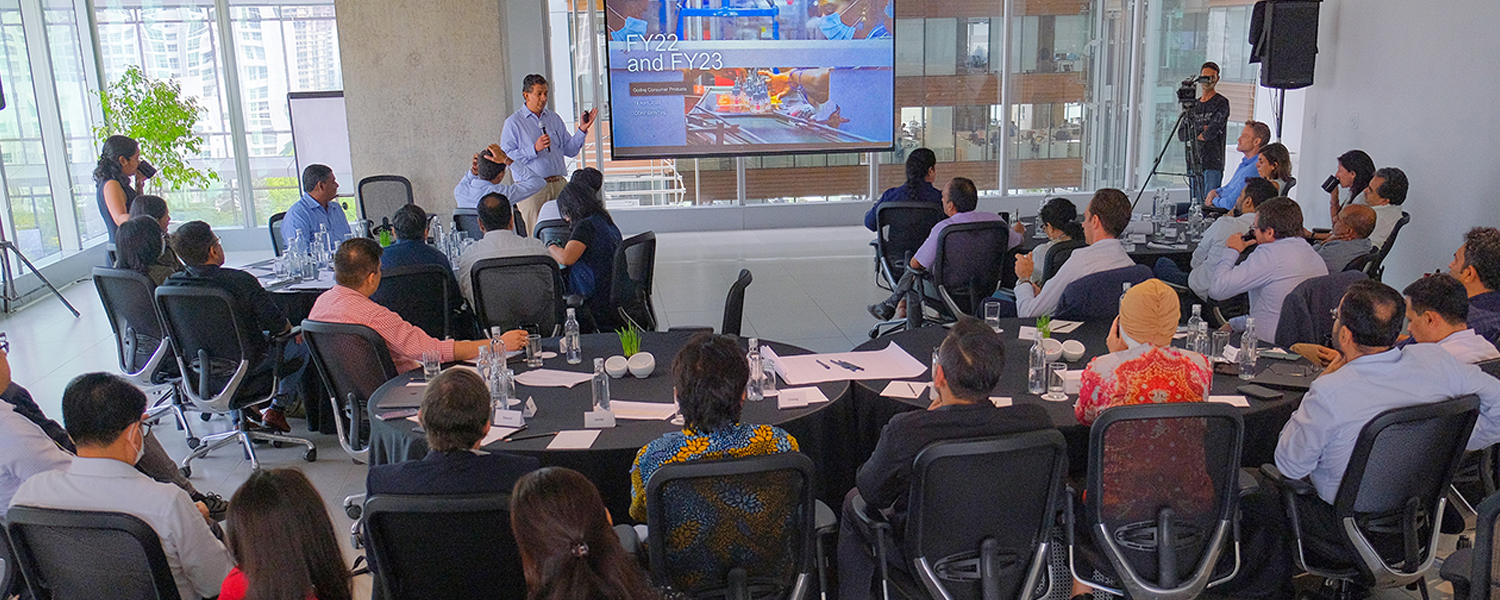What is your big dream for GCPL, and why is this of personal significance to you?
Back in 2013, I spent time at a workshop on discovering my personal purpose. I did a lot of soul searching that week, asking myself what makes me happy. On reflection, I felt that I was happiest when I was creating something. So, I framed my purpose as ‘painting the unseen on a large canvas’. With time, I am now reframing my purpose to include a lens of ‘serving and defending institutions’. This is something I feel quite strongly
Back in 2013, I spent time at a workshop on discovering my personal purpose. I did a lot of soul searching that week, asking myself what makes me happy. On reflection, I felt that I was happiest when I was creating something. So, I framed my purpose as ‘painting the unseen on a large canvas’. With time, I am now reframing my purpose to include a lens of ‘serving and defending institutions’. This is something I feel quite strongly about; in India and many emerging market countries, we need to cultivate more respect for institutions—how to pass the baton and build on the back of someone else, rather than ending the story when a person moves on. It is a big reason why I have chosen to build this leg of my career at Godrej, serving a legacy of 125 years, with the ambition to make it stronger and more purposeful.
GCPL’s purpose to bring the goodness of health and beauty to consumers in emerging markets inspires me, and my greatest hope is that over the next few years, we will be able to truly bring this alive in how we innovate and transform our categories and serve our consumers. All our efforts around category development, innovation, and consumer delight will be directed towards this.
We have some towering strengths as a company; a terrific product portfolio and a play in categories and markets with significant growth potential. We also have the humility to call out our weaknesses, the biggest of which is complexity, and we are working to solve for it. With our track record of value creation, strong fundamentals, and a clear strategy ahead, I believe we can take our iconic company to double-digit volume growth.
At the heart of all of this, is our people. We will invest disproportionately in developing internal talent and capabilities with the aim of making GCPL a place where great talent comes to thrive. This is critical to enable our growth aspirations.
How do you plan to achieve the
ambitious aspirations you have laid
out for GCPL? What is the strategy
for the next 3-5 years?
Our game plan, quite simply, is to focus on category development of our existing portfolio, driven by product innovation, relevance building, and access and marketing investments, and funded by a digitally enabled simplification of our company.
As market leaders in categories with significant non-linear growth potential—by which I mean that these categories will naturally grow faster than GDP for a long period of time—we have the amazing opportunity to develop and expand our categories and build long-term value
We have a really top-notch portfolio. From a geographic standpoint, 4 countries—India, Indonesia, Nigeria, and Bangladesh—account for 80% of our revenues. Together, these countries comprise just below a third of the world’s population and have consistently grown at twice the GDP of the world; so these may be low-income countries, but they are growing very fast. We also have 4 key products that account for 40% of our revenues and 60% of our profit pool; all are very heavily underpenetrated—liquid vapourisers and aerosols in Household Insecticides; grey coverage in Hair Care; and our Air Care category.
We are going to fire on the twin engines of blockbuster innovations and category development. Innovation has traditionally been GCPL’s strong suit. We will continue to build on that, but it is only half the solution. The other half is actually making these new products relevant and accessible, which we will do through more focused category development.
Our portfolio and heritage are in democratisation, and this is what our strategy hinges on—making amazing quality products available at accessible price points. We had earlier democratised the Indian hair crème market by offering the first hair crème in a sachet in the country at just ₹30. We have now launched this at ₹15, which will open it up to a new set of users. Similarly, we have introduced game-changing access packs in Household Insecticides in Indonesia. We have a slew of re-launches in the first quarter of fiscal year 2022-23, which we believe will dramatically build the relevance of our categories.
Our journey on simplification is making good progress, with the Global Category structure yielding early results. As our Cost to Serve reduces, it will give us significant fuel for growth and digital transformation. But investments are only part of the story in digital transformation.
We have also made two senior appointments of people with significant experience in digital transformation—Rajesh Sethuraman as CEO of ASEAN and Vijay Kannan as the Head of Business Transformation and Digital. Rajesh spent 21 years at Hindustan Unilever and Unilever, leading teams across categories and divisions in South Asia and Sub-Saharan Africa to deliver significant value for the business. In his previous role, he led the execution of Unilever’s largest digital transformation programme across Asia, Africa, and the Middle East. Vijay was the Global Chief Information and Digital Officer of Shell’s Lubricants business and has past experience as Hindustan Unilever’s Chief Information Technology Officer, and in Asian Paints. The brief is simple: if we were a digital-first company, how would we look at dramatically reducing our Cost to Serve, while enhancing consumer experience?
At the heart of our success today lies existing category penetration-led volume growth. I know it will not be easy to do this consistently, but I would measure medium-term success as achieving something in the vicinity of double-digit volume growth.
Exchanging ideas and building plans for the year ahead at my first team offsite with our India leadership team in March 2022
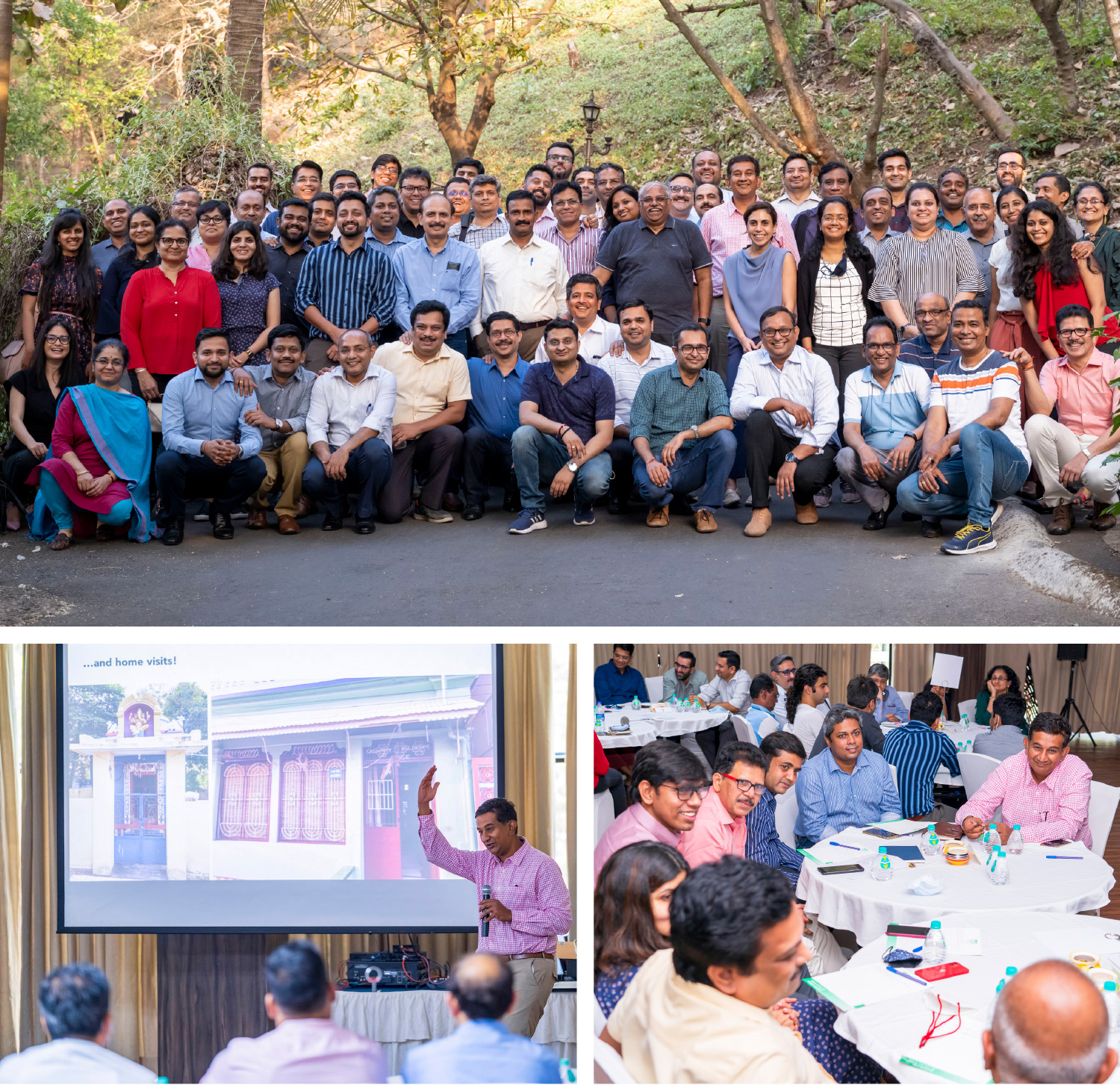
You have emphasised that a transformative
business plan needs a philosophy that all of GCPL
collectively believes in. Tell us more about the
operating philosophy you have crafted.
A business model works on paper, but to make real change possible we need a shared philosophy that we truly believe in. Over the last several months, I have spoken to and met many, many people across our company, and from those conversations and my reflections, we have crafted a 5-pronged operating philosophy. These principles are already shaping the choices we make. Let me tell you how.
Our first principle is Less is more; Much less is much more. It guides not just how we do business, but also importantly, our commitment to becoming more sustainable. The environment is not a premium; our consumers should not have to pay a green premium. We have to innovate better and develop products that are both sustainable and more affordable.
Our powder-to-liquid handwash, Magic, is a great example of how we have reduced plastic, water usage, and transportation costs to create a product that is a quarter the cost of other handwashes in the market, and can democratise the category at a time when sanitation is of global significance. We have taken Magic global, and the scale up is very encouraging.
The second is Consumer first, Business second. At GCPL, we have historically kept quality out of the equation on short-term business performance. It is pretty much an adage—quality cannot be tampered with to manage price volatility—and really laudable. This is Consumer first in action. We are going to do the same with media—delink media investments from short-term business performance, because ultimately media is also an investment in the future. Going forward, I hope you will see our consumer investments in terms of media remaining the same, regardless of gross margins in the short term.
Sharing our vision for GCPL with leaders from across
Godrej at the Godrej Leadership Forum 2022. I am
assisted on stage by a sign language interpreter.
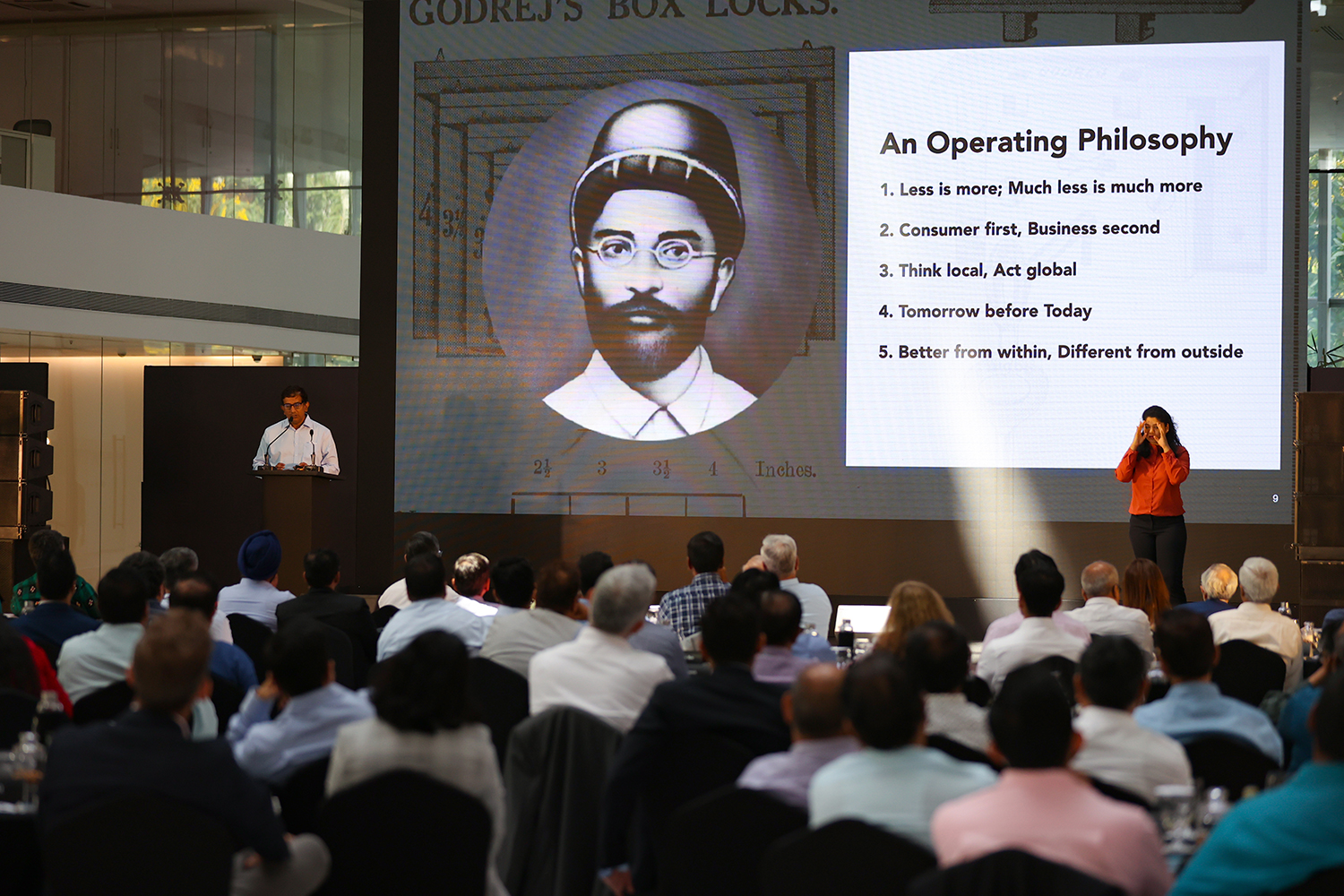
Think local, Act global is the third. One of the first structural changes I made was setting up a Global Category Team. As part of this shift, we have a centralised strategy, product development, innovation, and brand communication for our three core categories (Household Insecticides, Hair Colour, and Air Care), while keeping market development or category development and brand building, advertising, P&L, etc., local. This allows us to increase the rigour, objectivity, and consumer focus on activities that are particularly strategic and long term in nature—distinct from daily operations.
We are doing this in areas where we see high fungibility across geographies and therefore, greater efficiency and effectiveness from a global approach. The rest of our portfolio, which is largely Soaps in India and Dry Hair in Africa, tends to be local businesses, operating mostly in one geography, and we don’t see the benefit of globalising them. We remain choiceful on why to globalise, and which parts of our portfolio and functions will benefit from this globalisation.
The fourth is Tomorrow before today. Often consumer goods companies get caught in a ‘today’ culture. Take forecasting. You forecast for ambition, and when you are not able to achieve it, to somehow make up for it, you compromise on the ‘tomorrow’ often just through media cuts. The big change we are trying to introduce is that while we have an ambition (double-digit volume growth in the medium term), our forecasts are always going to be for the reality on ground. We will hold our sales system responsible for delivering on a real forecast, and more senior management will be responsible for delivering on the ambition—decoupling ambition and forecasting.

And the fifth and last is, Better from within, Different from outside. The best examples are of the bets we are taking on people. When we set up a Global Category structure, we promoted Robert Menzies, who previously worked as the Head of Strategy at Godrej Industries and the Head of GCPL’s E-commerce business in India, as the Global Head of Category, Innovation, and Strategy.
We appointed Somasree Bose, who had 18 years of experience in GCPL as the Chief Marketing Officer, India. Thomas Dawes, who had been working for 10 years at GCPL as the Chief Creative Officer of BBLUNT, was appointed as the Global Head of Equity and Communication, to lead advertising on global brands. Amit Jain, who had spent 10 years at GCPL, was heading Customer Marketing in India and we expanded his role to include Sales Development. But where we found that we did not have internal talent, we hired from outside.
In Africa, where the business has turned around considerably, the role of the CFO is crucial. We appointed Adesola Sotande-Peters in the role, who has previously worked at multinationals like Diageo and Unilever.
Building on our growth plans at GCPL’s Global Leadership
Meet 2022 at our headquarters Godrej One in Mumbai
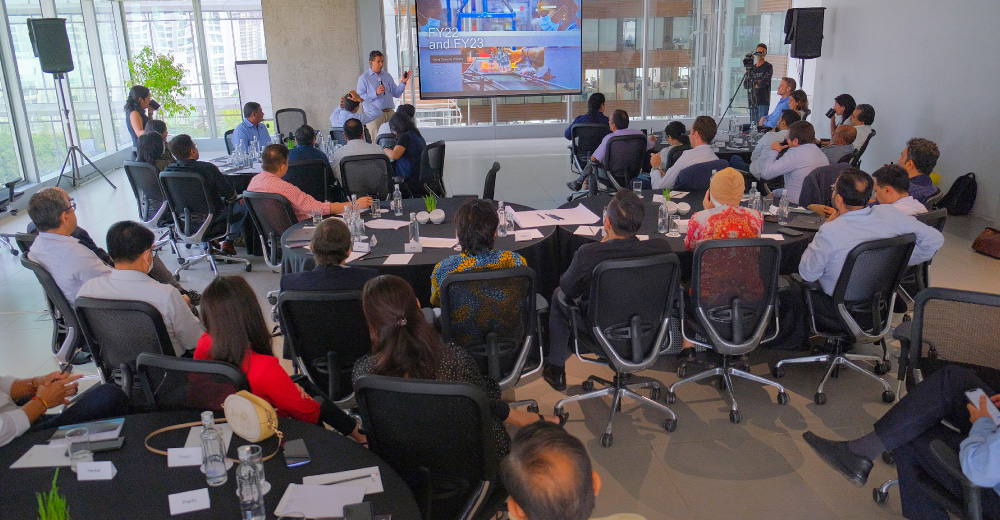
We have seen a significant shift in how people are
thinking about careers and personal growth over the
last couple of years. How is GCPL reimagining its people
offerings to continue to attract and retain top talent?
I have spent nearly a quarter of my time travelling across India, Africa, Indonesia, and the USA, meeting our people and sharing in their stories. This was my induction to Godrej and what makes our legacy so powerful and unique. We have an incredible team, deeply committed to our company, values, and ambition. So, underlying all of our business ambitions is our continued commitment to fostering a values-based culture and organisation—what we call ‘sprinkling some people stardust’—making GCPL a place where great talent wants to come to work and thrive.
Tough Love is at the heart of our employer proposition. We will nurture and bet on potential and internal talent. Developing best-in-class functional expertise is a big part of this, so this year we are doubling down on functional capability building. This includes creating global learning agendas and getting global experts to train our teams.
I am personally leading the work around building Marketing capabilities; Dharnesh Gordhon, Business Head of Africa, USA, and Middle East, is working on Sales capabilities; and Pallavi Wad, Head of the India Manufacturing and Supply Chain Organisation, is leading Supply Chain capability building. Given our operating model and global presence, there are great opportunities to build global careers and experiences across multiple emerging markets.
We are also restructuring to build an organisation that is more empowered, lean, and digital. What this means for our people is richer, more meaningful jobs, with more empowerment. For our top talent, we will offer the high velocity that is made possible by our growth ambitions. We will match this with market-leading opportunities for value creation through our performance-linked rewards schemes. This is part of a more holistic benefits proposition, including best-in-class wellness and medical support and flexible work options.
Being diverse and inclusive is core to who we are at Godrej, emphasised by our values of Trust and Respect. Like with our sustainability commitments, we believe that the next phase requires us to shift from a ‘do no harm’ approach to a ‘proactively do good’ approach. Our change agenda must be sponsored by our leadership team through accountability and role modelling.
So, we are having critical conversations to make leaders more mindful of the power that resides with them as change agents, not only for Godrej, but also for our world; inspiring them to be better allies to women, persons with disabilities, individuals from the LGBTQIA+ community, and other under-represented groups in the mainstream workforce.
Spending time with our people, consumers, and
partners across India, Africa, Indonesia, and the USA
and learning about the incredible legacy of GCPL
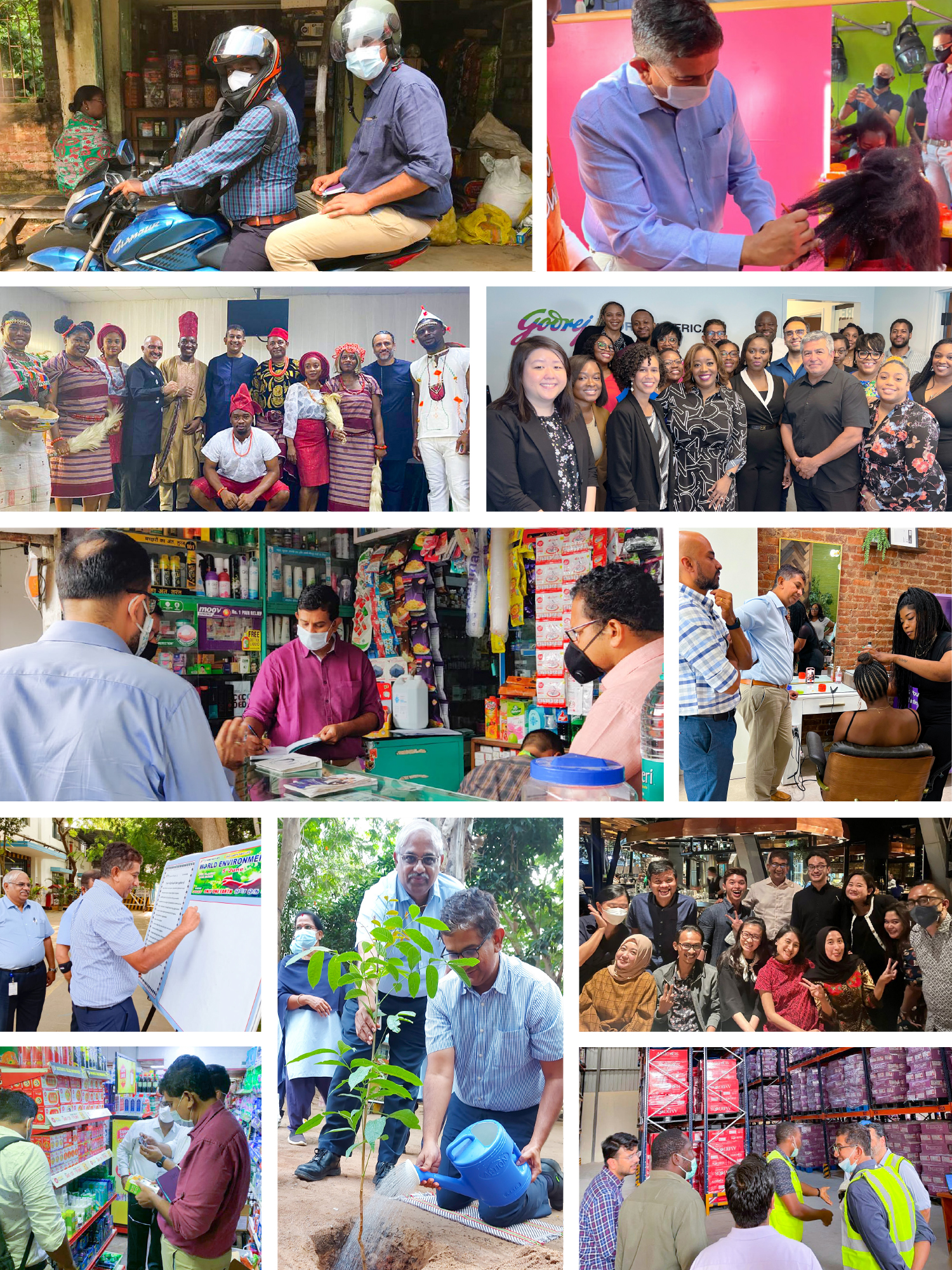
The latest Intergovernmental Panel on Climate
Change (IPCC) sixth assessment report is alarming
and talks of a catastrophic future of climate crises
linked calamities if governments and companies
don’t step up. What are you doing to make GCPL
a more responsible and sustainable company?
Climate crises is a critical concern, not only for us as businesses, but also as individuals securing the future of our world. We need urgent action. The IPCC report reaffirms that we must reduce our emissions by more than half by 2030. Only then would we be within the safe threshold of the 1.5-degree Celsius global warming limit by 2050. But none of us has done enough, and in the current scenario, we are poised to reach the limit a whole decade sooner.
At GCPL, we recognise that we need to do much more and are stepping up our commitments. We already source over 30% of all our energy from renewables. We have reduced our emissions by almost half from 2010. We recharge more than 1.9 times the water we use, and we send zero waste to landfill. We will now aim to be Scopes 1 and 2 carbon neutral by 2025. We have set science-based targets in line with the initiative to help limit global warming well below 1.5-degree Celsius. In the first half of fiscal year 2023, we will publish the roadmap to meet our science-based emission reduction targets.
A big area of focus is making products greener by using the life cycle assessment (LCA) approach to understand the environmental impact of our products across their entire lifecycle from sourcing of raw materials right to end-of-life or disposal. As of 2021, we have conducted LCAs for more than half of our products by revenue. The findings help us determine the environmental hotspots or areas of concern. These serve as the starting point for our greener product initiatives.
Let me share the example of how our R&D team has worked on reducing the environmental impact of Goodknight Gold Flash. The technology used in the wick was imported at a high cost from a monopoly vendor. In addition, the wicks were made from non-biodegradable and non-reusable material. The team saw this as an opportunity to develop an indigenous wick that could deliver the same efficacy at a better cost and with a lower environmental impact. The new 100% biodegradable wick is a GCPL-owned, patented indigenous formulation. It is not dependent on a single vendor, is at par with Gold Flash’s efficacy and longevity, is 70% cheaper than the imported wick, and reduces our plastic usage by over 300 tonnes a year.
We are also working on finding and testing alternate packaging materials and increasing the use of post-consumer recycled (PCR) plastic to move away from virgin plastic. Apart from just ensuring regulatory compliance with extended producer responsibility (EPR) plastic waste management guidelines, we are innovating on formulation, design, and delivery models to lower our plastic footprint.
We will continue to increase transparency in our ESG reporting and disclosures, reaffirming our commitment to true sustainability. We have also built on our learnings from the last decade and renewed our sustainability vision for the next 5 years to continue building a more equitable and greener world.

Goodknight Gold Flash, India’s most powerful liquid vapouriser with
visible vapours. Our team developed an indigenous wick to deliver the
same efficacy at a better cost and with a lower environmental impact.
Previous
